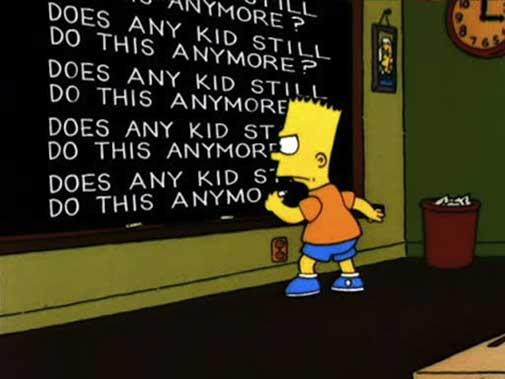
Many years ago, I wrote an article called "Invasion of the Cable Babies" for a broadcast promotion directors' publication, triggered by my discovery that I was beginning to get students in my TV classes who had cable TV their entire lives. They made no distinction between broadcast and cable. To them, television always meant 50-plus channels, and NBC and USA were just two of the many channels. And today, there's yet another generational viewing shift...
(Author's Note: In that original article, I suggested that, with the growing multichannel universe, broadcasters should begin to put a station ID bug in the lower right of the screen to help distinguish themselves from the channel clutter. To whatever degree my suggestion led to the covering of a third of the screen with incredibly distracting visuals and sound promoting the channel, the programs, and pretty much everything else, I apologize.)
Over the years, I began polling my classes at Rowan University in New Jersey about what they watch and how much they watch. As I now have zero students who watch only over-the-air broadcast television, for 2011 I decided to include a new question about HOW they watch.
The group was comprised of 59 percent male and 41 percent female, with an average age of 20. They were there either because they were interested in TV, or it was the only class they could find. I didn't ask that question. I didn't really want to know.

A decade or so ago, you could be certain that when asked about their favorite current or recent TV show, a huge majority would come down for NBC's Friends and Seinfeld and Fox's The Simpsons. Apparently things have changed.
This year, with 75 students polled, the question about favorite current/recent show resulted in an astounding 44 different show titles. Of those 44, only 14 received more than one vote, with Showtime's serial-killer drama Dexter the winner -- claiming a mere eight votes.
Of all the shows nominated, fewer than half -- about 41 percent -- were on broadcast networks. Basic and premium cable pretty much split the rest.
Just a few years ago, most students watched in real time, or occasionally time-shifted with a VCR. This year, only about 26 percent watched exclusively in real time. And while the rest occasionally watched in real time (mostly sports), most of the time they went with DVDs, DVRs or On-Demand.
Most surprising of all was that about four in 10 usually downloaded programs, from places like Hulu or Netflix, and watched on their desktop, laptop or iPad.
So what conclusions can be drawn from this seriously unscientific survey?
For the TV industry, the good news is that only about eight percent of these young people said they watched very little television. Fifty-three percent watched more than a few hours per week, and 39 percent watched, by their own estimates, entirely too much television. (Needless to say, they're my favorites.)
The bad news for the industry is that there seems to be no way to predict what the next generation of consumers want to watch. For example, I would have thought that CBS's The Big Bang Theory would be a hit with 20-year-olds. It didn't get a single favorite-show vote.
From a teacher's point of view, I have to spend a lot of time explaining the stuff I used to take for granted -- for example, the difference between broadcast and non-broadcast television. Or, for that matter, remembering that what I mean when I use the word television (watching in your living room on a Barcalounger) isn't what THEY mean when I use the word television (any time, any place, large screen, small screen, hand-held, etc.).
Instead of "The TV Industry," I'd be better off changing the name of the course to "The Video Content Delivery Systems Industry." But if I were a student, even I wouldn't take a course with THAT name.
There is one bright spot for me as a teacher, however. Unlike TV executives, I don't rely on predicting viewer behavior for my paycheck.